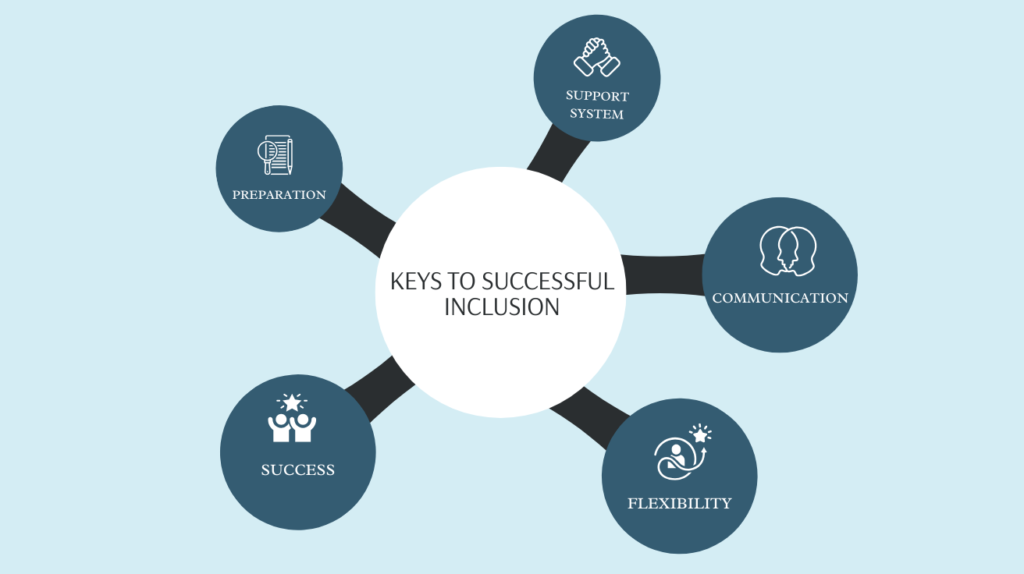You know those moments that make your heart race with a mix of fear and hope? That’s exactly how I felt as Idan stepped into his first inclusive math lesson. As a parent of an autistic child, I often walk the fine line between shielding him and encouraging him to explore new opportunities. This is our story of taking a brave step toward autism inclusion—a journey that began with a single math lesson.

The Transition: First Steps Toward Inclusion
Thoughtful Beginnings
Our journey didn’t begin with a leap but with careful planning and teamwork. Conversations between Idan’s communication class teachers and the mainstream staff laid the groundwork for this big step. From the start of the school year, our goal was clear: to foster inclusion with robust support.
When the day finally approached, I prepared Idan with enthusiasm. “You’re going to join the big math class!” I told him, masking my own nervousness. Inside, I wrestled with questions:
- Would the noise overwhelm him?
- How would classmates respond to his differences?
- Could he thrive in this new environment?
We approached this cautiously. Idan and a classmate from his communication group were introduced to the regular class for just one math lesson per week. It was a small but significant step—testing the waters before diving in fully.
What Makes Inclusion Work? The Power of Planning
One of the most touching aspects of this transition was how seriously the school prepared for it. They ensured every detail was addressed:
- Skill Matching: Idan’s math skills were assessed to ensure he could keep up.
- Optimal Timing: Lessons were scheduled during peak focus hours.
- Support Staff: A trained assistant was present for guidance.
- Parent Communication: Regular check-ins kept us informed of Idan’s progress and stress levels.

Inclusion here wasn’t just about academics; it was about building a sense of belonging and bridging the gap between special education and the broader school community.
The Big Day: Idan’s First Inclusive Math Lesson
Breaking Down Barriers with Connection
The day began with an inspiring moment of preparation. Idan’s teacher addressed the mainstream class beforehand, turning potential challenges into opportunities for empathy.
“What makes it hard to focus in class?” she asked. Students shared relatable struggles, from noisy distractions to complicated instructions. This conversation reframed Idan’s differences as universal challenges, setting the tone for a welcoming atmosphere.
A Warm Welcome
When Idan entered the classroom, he wasn’t just tolerated—he was embraced. His peers cleared space for him in the center of the room, helped him find his materials, and treated him as an equal. During group activities, classmates eagerly included him, breaking down barriers with kindness and curiosity.
Success in Action: A Parent’s Pride
You want to know what success looks like? It’s seeing your child raise their hand confidently among peers. It’s watching Idan actively participate and shine during group work. His teacher’s emotional phone call after the lesson confirmed it: the first day of autism inclusion was a resounding success.
Idan’s excitement spoke volumes. “Mom, I was a star!” he declared. This wasn’t just about math; it was about confidence, connection, and belonging.
Creating a Balance: Inclusion Meets Specialized Support
The Role of the Communication Class
Idan’s home base, his communication class, remains a safe haven designed to meet his unique needs. With just 8-9 students, this environment offers individualized attention while encouraging social and academic growth. Visual schedules, sensory accommodations, and a deeply understanding staff make this classroom a nurturing foundation for venturing into mainstream settings.
The Both/And Approach
Our journey highlights the importance of balance. Inclusion doesn’t mean abandoning specialized support. Idan benefits from both worlds—a structured communication class and the opportunity to engage with neurotypical peers in inclusive settings.
Building a Foundation for Successful Inclusion
Steps for Parents Considering Inclusion
If you’re exploring inclusion for your child, here are practical steps to guide you:
- Start Small: Introduce inclusion gradually, starting with one subject or activity.
- Collaborate: Work closely with teachers and support staff to prepare your child and their classmates.
- Prepare Your Child: Use visual schedules and positive conversations to ease transitions.
- Monitor Progress: Stay in touch with educators and adjust plans as needed.
Signs of Success
Inclusion is working when:
- Your child looks forward to lessons.
- They actively participate and connect with peers.
- Stress levels remain manageable.
The Ripple Effect of Autism Inclusion
Inclusion benefits everyone. For autistic children, it builds confidence and fosters social skills. Neurotypical peers will learn understanding and empathy. Broader school community will adopt and enrich an environment where diversity is celebrated.
Looking Ahead: The Path to Inclusion
This journey has taught me that inclusion is about more than academics. It’s about creating a world where differences are understood, valued, and celebrated. Every small step builds a bridge toward a more inclusive future.
As parents, we have the power to advocate for thoughtful transitions and trust in our children’s potential. Let’s embrace the possibilities of autism inclusion—one lesson, one smile, and one breakthrough at a time.

Internal Links:
- Empowering Autistic Children: The Power of Play for Social Connection and Growth
- Enriching Education in the Least Restrictive Environment and promoting inclusion


